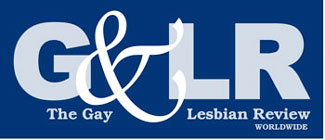Letters to the Editor
0To the Editor:
I have just finished reading, with much interest, the essay by Ignacio Darnaude in the November-December issue, “The Love Song of Lorca and Dalí.” The subject is of particular interest to me for a couple of reasons, one being the fact that during a semester I spent at the Universidad de Granada at the end of 2009, a number of lengthy articles were published in the local paper regarding the disinterment of a body from an unmarked grave situated in the foothills of the Sierra Nevada just outside the city. By all accounts, these were indeed the remains of the celebrated local poet, Federico García Lorca, who “disappeared,” or rather was executed, during the fascist regime that took over the country in the mid-1930s.
Although in her Art Memo, “What Lorca and Dalí Almost Had,” Emily L. Quint Freeman maintains rightly that “the fascists hated that Lorca was queer and socialist,” regarding her assertion that “his remains were never found,” I beg to differ.
This violent episode that occurred nearly one hundred years ago remains controversial and uncannily prescient of this moment we are living through now. In the USA today, as in Spain just fifteen years ago, the alt-right fights to rewrite the past, situating themselves as the heroes of society. The inconvenient truths of murdered queer and trans bodies, then and now, remain viciously hidden from the light of day.
The other connection that I have to the love story between these two avant-garde Iberian artists of the last century is less morbid. A few years back, I received as a thoughtful gift the book Sebastian’s Arrows: Letters and Mementos of Salvador Dalí and Federico Garcia Lorca (2005), edited and translated by Christopher Maurer of Boston University. Chris was a friend and colleague of my late mother, Audrey Lumsden-Kouvel, and it was she who knew it would be of much interest to her gay son. I most highly recommend this collection of love letters exchanged between Lorca and Dalí to any reader who wants to delve deeper into this fascinating episode of our shared history.
Alex Kouvel, Palmares, Costa Rica
Gisèle Freund’s History of Photojournalism
To the Editor:
Regarding the Art Memo on photographer Gisèle Freund in the September-October 2024 issue: missing from Emily L. Quint Freeman’s otherwise solid overview of Freund’s life and career is any mention of her landmark study on the history of documentary photography, Photography & Society, which was published in English in 1980 by David R. Godine, Boston. First published in France in 1974, the book would be translated into German, Danish, and Japanese editions before finally emerging in Godine’s English edition. It as an illustrated history that investigates the origins of documentary photography in France in the 1840s and continues through to the birth of photojournalism in Germany and its explosion of in American mass media magazines like Life and Time.
Freund was an excellent writer and author of several other historical studies, including La photographie en France au dix-neuvième siècle (Photography in France in the Nineteenth Century) and James Joyce in Paris: His Final Years.
I hold Gisèle Freund in great esteem. I met her when she exhibited her photographs at the Sidney Janis Gallery in New York, where I worked in the mid- to late 1970s. We remained in touch for a number of years into the 1980s. She was a great and sometimes combative intellect, full of amusing anecdotes about her professional life, but more reserved when discussing her personal life, although I never doubted her affiliations were woman-centered. Thanks to her, I was invited to a gathering at the Manhattan apartment of Natalia Danesi Murray, whose recently published book, Darlinghissima: Letters to a Friend, was drawn from the private correspondence Murray had over four decades from her intimate friend, New Yorker journalist Janet Flanner. Longtime transatlantic cosmopolitan that she was, Gisèle Freund marveled that in all those years she had herself only just met Natalia Danesi Murray. I felt I was witnessing a moment of lesbian history.
Allen Ellenzweig, New York, NY
Correction
In the November-December 2024 issue (page 19), an illustration showing Federico Lorca and Salvador Dalí in intimate embrace is apparently a fake, the work of a clever Photoshopper. Whether a product of wishful thinking or a desire to smear one or both men—or perhaps it’s legitimate, who knows?—the picture has appeared in numerous outlets over the years. For the record, there are other photos of the two men embracing that have not been challenged, so the author’s case for the intimate nature of their relationship remains intact.


